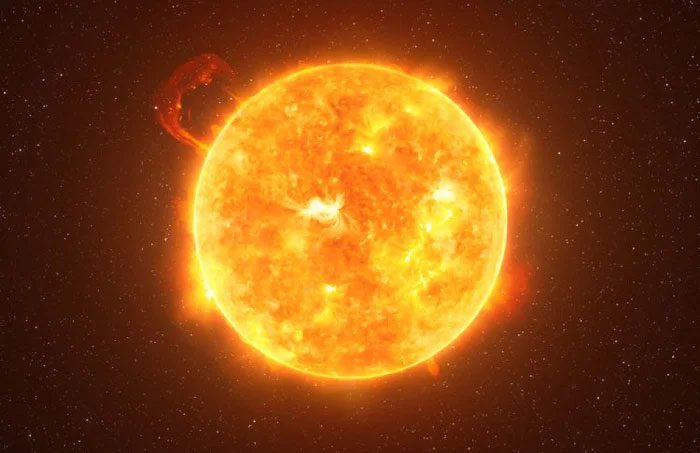Every 26 seconds, the Earth “shakes” right beneath our feet. While this tremor is not strong enough for us to feel, seismologists around the world have been able to measure these vibrations with their equipment.
In the early 1960s, Jack Oliver was a researcher at the Lamont Geological Observatory of Columbia University (now known as the Lamont-Doherty Earth Observatory in the United States). At this time, he published a study on the “microseismic storm” with a duration of about 26 to 27 seconds, becoming the first to record this mysterious pulse.
Oliver’s paper claimed that the pulse seemed to originate from “the southern or equatorial Atlantic Ocean” and discussed two hypotheses related to its source mechanism.

In the 1960s, a researcher recorded that the Earth would vibrate every 26 seconds.
“The favored hypothesis” suggests that the pulse is generated by ocean waves crashing against the coast of Guinea.
However, a second hypothesis argues that the pulse is a type of “harmonic tremor” related to magma activity beneath the South Atlantic. Oliver even discovered that this vibration resembled a heartbeat and would be stronger during the summer months in the Northern Hemisphere.
At that time, Oliver did not have advanced tools like digital seismometers at his disposal. Instead, he had to work with paper records, which may have limited his research capabilities.
About 20 years later, a researcher from the United States Geological Survey took a closer look at this strange microseismic phenomenon. Geologist Gary Holcomb found that the pulse was stronger at certain times, allowing for a detailed study of its nature.
Unfortunately, Holcomb and Oliver’s detailed studies were lost. However, in 2005, a recent graduate named Greg Bensen stumbled upon these Earth vibrations and began researching them.
At that time, Bensen was analyzing seismic data at the University of Colorado in Boulder. One day, Bensen’s advisor asked him to present what he was working on, and he shared some data. Bensen hypothesized that these vibrations were a strong signal coming from a very distant location.
Mike Ritzwoller, a seismologist at the University of Colorado, shared his research on Earth vibrations with the journal Exploration. According to Ritzwoller, when he and postdoctoral researcher Nikolai Shapiro focused on this unusual vibration, they realized something strange was happening. However, they were unsure of what it was.
The team examined the signals, analyzed the data, and checked their equipment before concluding that this microseismic theory was indeed real.
They then began working and triangulated the source of the pulse to a single location in the Gulf of Guinea, off the west coast of Africa. They also tapped into the remaining data from the studies of Oliver and Holcomb and published their paper in 2006 in the journal Geophysical Research Letters.
In the 2010s, another graduate student analyzed the pulse in detail. This student, named Garrett Euler, was working in the laboratory of seismologist Doug Wiens at Washington University in St. Louis. Through Euler’s work, the source range of the pulse was narrowed down to the Bight of Bonny in the Gulf of Guinea.

The Sun may be the primary cause of this.
Even in the absence of earthquakes or volcanic eruptions (also known as “quiet times”), seismic noise still exists in the background of the Earth. According to Ritzwoller, the Sun is the primary cause of this.
The Sun heats the equator more than the poles, which then creates winds, storms, ocean currents, and waves. When a wave hits the shore, energy is transmitted inland.
He explains that this is similar to tapping on a table, where the energy from the tap can travel through the table and be felt at the opposite end.
Using samples from this surrounding seismic noise, researchers can learn about the Earth’s interior.
In addition to narrowing down the source point of the pulse, Euler also made the case that waves crashing against the shore could be a possible cause of these unusual vibrations.

Another hypothesis suggests that waves crashing on the shore are a potential cause of these unusual vibrations.
As waves travel across the ocean, pressure differences in the water may not significantly affect the ocean floor. However, when they hit the continental shelf, where the solid ground is closer to the surface, the pressure will deform the ocean floor (similar to tapping on a table) and cause seismic pulses that reflect wave activity. In 2013, Euler presented his findings at the American Geophysical Union conference.
However, not everyone agrees with this assessment. In another study published in 2013 by a group led by Yingjie Xia from the Institute of Geodesy and Geophysics in Wuhan, China, an alternative explanation was offered: volcanoes.
This is not the only debate surrounding this mystery. There is another question that remains, why does the pulse originate from the Bight of Bonny? What makes it so unique? Unfortunately, researchers at this specific moment have yet to answer this.
Despite being intriguing, the pulse may not be a top priority for seismologists. As Wiens stated, seismologists tend to focus on specific things, such as identifying the structures beneath continents.
And the study of Earth vibrations does not seem to fall into this category. Thus, the rhythmic pulse may remain an example of many unknowns that still exist on our planet.


















































